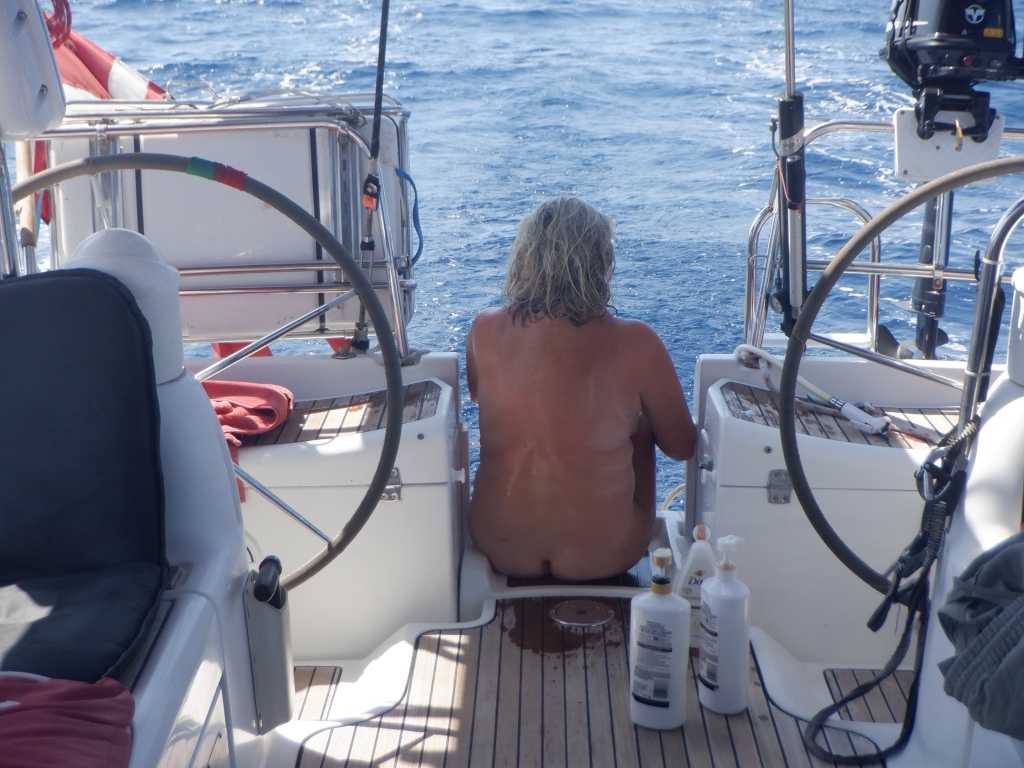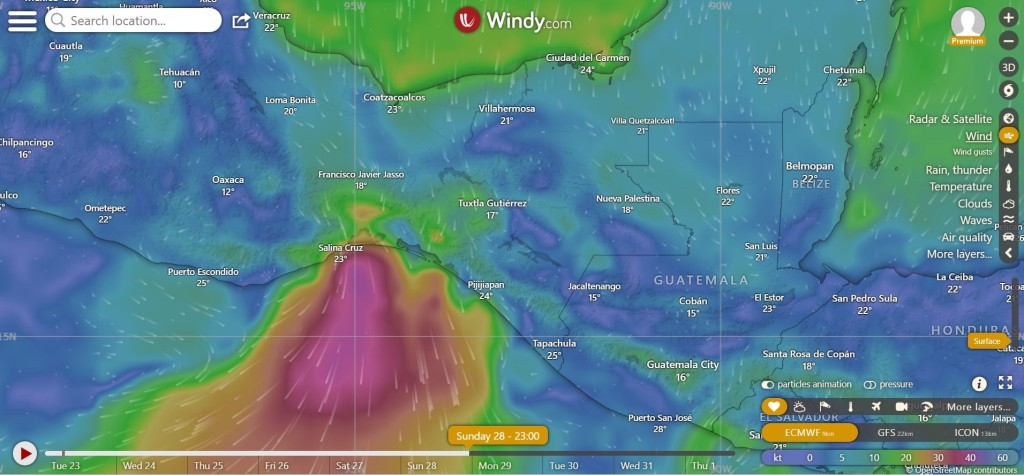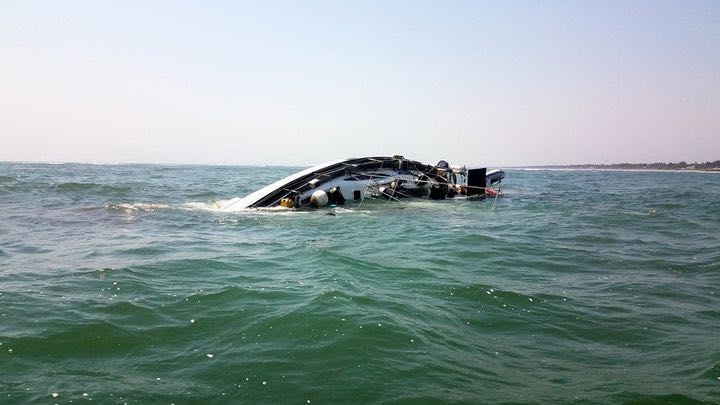First a little about our vacation in Hawaii with our family.
It is the middle of February and we’ve just gotten back for a fabulous vacation on Hawaii with Carsten’s daughter, son-in-law and grandchildren. We played active grandparents and took Viggo (12 years old) and Frida (10 years old) to Pearl Harbor for the day. It is important that our children/grandchildren never lose sight of what previous generations sacrificed so the world is as it is today.
Another day we took them on a beginners diving course. With the sure hand of the instructor they put on diving tanks, BCD, flippers and masks and WOW – away they went underwater (ok, only 8-10 feet down, but still). Vinni and I have our dive certificates so we just swam alongside while Carsten filmed.
As revenge, the family got us up on a zipline adventure (9 different ziplines) at a large ranch. Many scenes from Jurrasic Park were filmed here as well as other movies. Christ, I was nervous as I was hanging in a harness and zipped at terrifying speeds across ravines and gullies. Carsten, as usual, took it all quite peacefully, and filmed almost the entire time, even as he flew through the air (damn him). The rest of the days were spent enjoying the beach and the wonderful beach house Jamie and Anne Sophie borrowed from the friends in California.
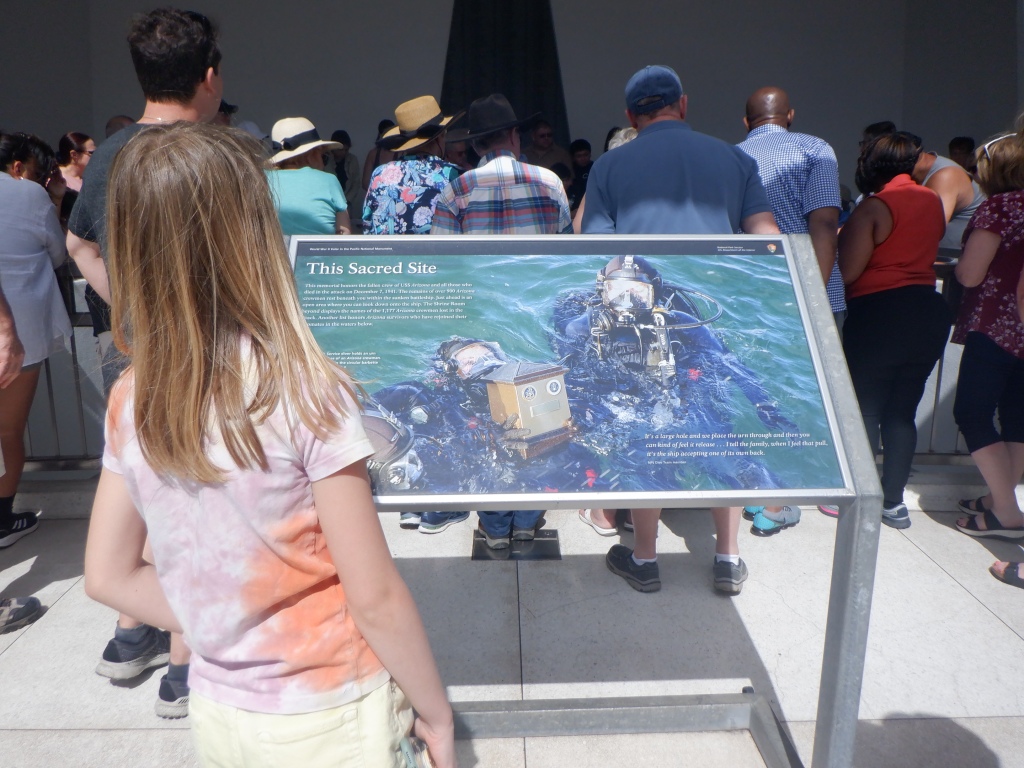
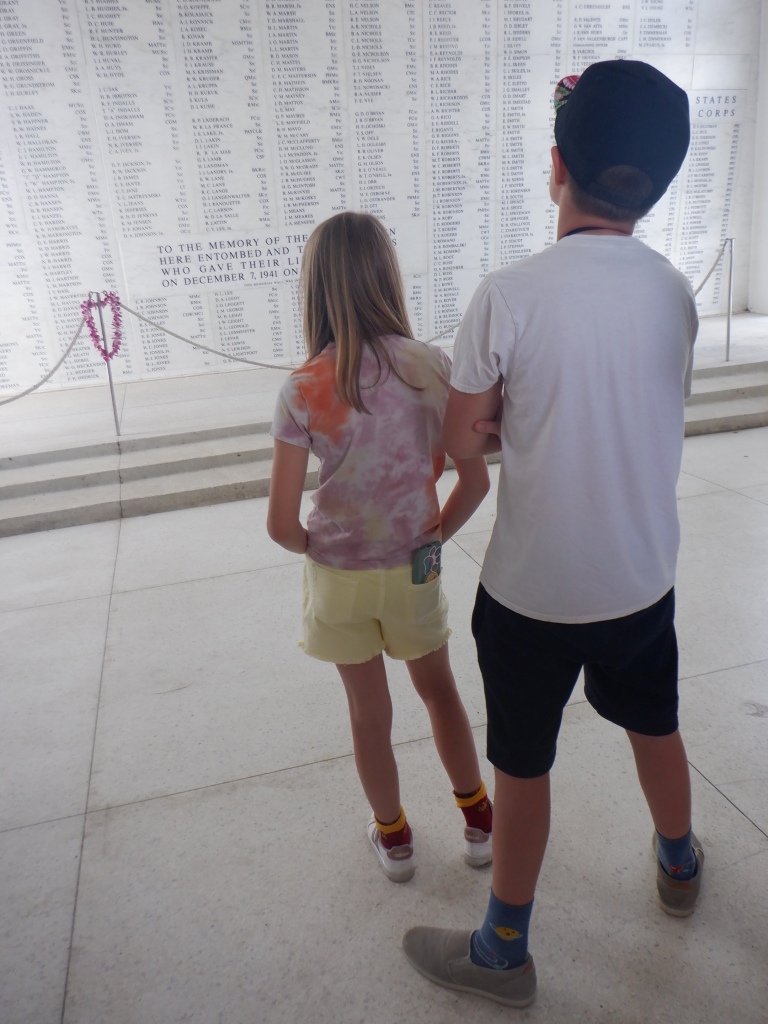
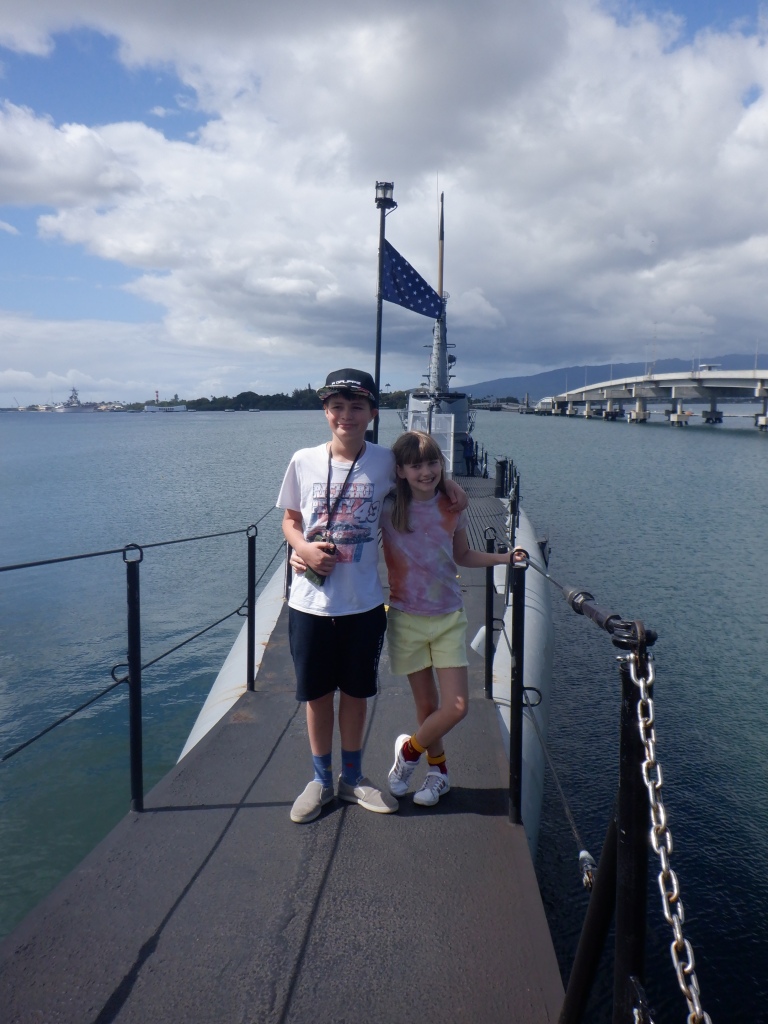
Back to sailing.
Capri is in the marina at Isla de Navidad, Mexico. After two day’s preparations, we are ready to set sail, turning southward, bound for Denmark.
When we leave Capri for a period of time, as here two weeks, we “pickle” the watermaker, meaning we sterilize it. When we get back and want to use it again, it needs a thorough flushing. I don’t know if I have a sixth sense or if I just assume that anything that can go wrong will go wrong, but just before we leave, I tell Carsten that we should flush the watermaker before leaving the marina. Sure enough, as the flush starts, we see water running out on the floor.
Shit!
The flowmeter is broken and water is pouring out through the cracks in it. We carry umpteen spare parts, but not, of course, a spare flowmeter.
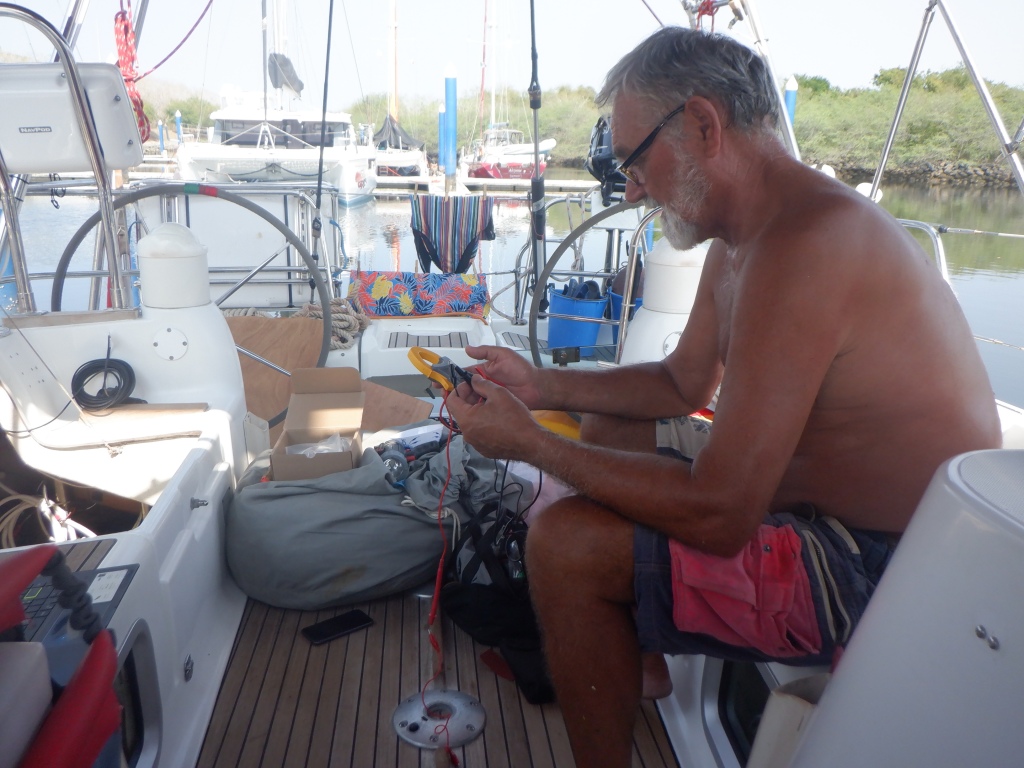
Back up to the marina office and tell them we are staying a bit longer.
Carsten finds a store in La Paz that has the flowmeter and orders one, paying for express delivery – two day service. This is Tuesday so we should get it by Friday, but considering this is Mexico, it will probably be Saturday. Saturday morning we can see via the tracking number that the package has yet to leave La Paz. Ok, this is Mexico, but still. Carsten contacts the store and they contact the postal service, but they have no explanation and don’t seem particularly concerned. The flowmeter arrives on Tuesday. Carsten tells the store he expects a refund of the “express” freight, but they say we have to ask the post office – right – go talk to a wall.
We end up being nine days delayed. We spent the days wisely, lying by the hotel pool drinking margaritas and eating delicious food. The delays means that we will skip a number of places and sail 500nm directly to Marina Chahue, the last port before crossing the dreaded Teuantepec Bay (T-Pec, as it is known to cruisers). We’ll wait here for a weather window to cross.
As we come down the coast, the winds are weak and we have to use the engine, only during the afternoons when there is a sea breeze can we use our sails.
Fortunately, there is no current running against us, as is frequently the case here. Four days after leaving Navidad, we pull into Marina Chahue.
We are out of practice when it comes to sailing passages and therefore we are both tired when we arrive. Carsten especially, since he managed to contract some kind of influenza-like virus while we waited on the flowmeter. He has been coughing the whole way. We did use masks when we flew to and from Hawaii, but he still got infected.
Why is T-Pec so infamous?
The bay is only 230 miles across, with Marina Chahue on the northern side and Marina Chiapas on the southern side. The southern side lies right at the border to Guatemala. Mexico is very narrow here and northerly winds on the Atlantic side of Mexico blast their way through a narrow passage between the mountains, accelerating as they pass through this “tunnel”. They arrive on the west coast blasting at gale or more force. In January and February, these winds can reach hurricane force. The winds can change and become dangerous in a space of under twelve hours. Sailboats need a weather window of at least two days to cross.
The strategy adopted by most sailors is called “one foot on the beach”. This means sailing no more than 2-3nm from the cost and following the coastline of the bay the whole way around. This adds an additional 30 or so nm but if the winds suddenly come up you are close to land and will be hit by the winds, but not the heavy choppy waves the winds will create. If the winds to come, you move even closer to shore, sailing only a ¼ or ½ nm from the beach. This is scary stuff. That close to the beach you can run into almost anything, fishing nets, fishing boats etc.
I have had many a sleepless night worrying about our passage over this bay. Just thinking about sailing that close to land at night scares me half to death. The waters are 10 meters deep, or even less. Carsten, of course, seems to be at ease with all this (damn him – he doesn’t lose any sleep). Fortunately, I can say all my worrying was for naught.
The morning after we arrive in Chahue we see the weather window opening, giving us several days of calm weather to cross in. We decide we might as well get going since waiting will only mean delay. I turn the key to fire up our engine and – DUH! Nothing. Nada. Dead as a doornail. No response.
We’ve never had a problem with our engine. Certainly nothing like this. We both get a bit panicky. Carsten grabs all his measuring devices and call our friend Gentry (diesel mechanic) who helped us install our lithium batteries. It turns out that our DC/DC charger, that should charge our starter battery first, then our house bank, has somehow gone bananas and used the current in our start battery to charge the house bank. This is not supposed to happen. On top of that, it has now gone into a sulk and will not answer any commands no matter what we try. Carsten goes to the last resort, unplugs the damned thing and “boots” it. The lights start blinking and Hurra! It works again. Now we can charge the starter battery from the house bank and an hour later, we are on our way out.
We are four hours delayed, meaning the very attractive weather we would have left in is now gone. So we snake our way out through the narrow S-shaped channel, across the two sand bars while the sea breeze blows a merry 24 knots right at us. We also have a foul current just to make everything more interesting or entertaining as Carsten is wont to say.
Carsten helms us out without breaking a sweat (he rarely seems concerned, damn him) and the next 3-4 nm we claw our way up against a nasty chop and heavy winds, before we can change course and get the wind and swell from behind. As the sun goes down, the sea breeze dies and we are forced to fire up our iron genny (engine).
When we are two-thirds our way up the bay, we check the weather reports again (thank you Starlink and Mr. Musk). The weather window is steady, no wind before late tomorrow, so we chop off the upper part of the bay and head straight across. We are no longer “one foot on the beach” as we are 20 to 30nm offshore. The sea breeze decides not to make an appearance the next afternoon so we end up sailing all the way to Chiapas on our engine. Marina Chiapas is a wonderful Marina and has a swimming pool with bar service (how decadent can you get?).
We were lucky transiting the T-Pec, but as always, there were also some issues. The local fishermen range far out into the bay in their pangas. The generally have no lights so it is impossible to see them. Many of them sleep in their pangas so they can empty their nets early the next morning. Twice during my watch, a flashlight suddenly appeared in front of Capri, a panga, warning me he was there. Carsten sailed closely passed a panga where three locals were sleeping. Happily, we didn’t hit any of them, but as Carsten says – it certainly makes night sailing entertaining.
We are going to skip Guatemala, as most do, because it is extremely expensive to check in and out of that country. Instead, the Plan (We have no plan and by golly, we’re gonna stick to it!) is to go to Bahia del Sol in El Salvador (BDS). This bay is famous amongst cruisers as it has a hotel, swimming pool and a small marina. Entrance to the bay is guarded by a shifting sandbar and at times nasty swells so no one tries to enter on their own. The marina supplies a pilot who comes out in a panga and leads you in. Bill owns the hotel and he has supplied pilots for years. The rule is that there is no entrance if the swells are over 1 meter high.
We have just arrived in Chiapas when we hear the terrible news at a cruiser has lost his boat trying to enter BDS. According to the news we have heard, this is what happened;
Three boats left Chiapas making for BDS. When they arrived, they were told conditions were not good for entering, they should heave to and wait for the next day, which they did. The next day they waited by the entrance and then the pilot boat arrived to lead them through one at a time.
The first boat, a catamaran with a draught of only 3.5 feet went through without issue. The second boat, with a draught of 5.5 feet, struck the bar hard, the following wave almost pitchpoled him (turned him end over end), finally turned him on his side and broached him. The skipper was very competent and managed to hold the boat and let the next swell push him off the bar and into deep water. There was apparently no damage to the boat and the crew was not injured.
The third boat, with a 7.5-foot draught (Capri has a 7-foot draught) had seen all this and questioned the pilot who said there was no problem, they had merely mistimed a wave and he could come in without any issue.
So he followed the pilot in and hit bottom really hard. So hard that even the following swells couldn’t get him off. The boat, a 49-foot Moody, broach and water poured into the salon through the open companionway. Water started coming in from below decks. The pilot boat tried to pull him free but couldn’t. The boat finally rolled completely onto its side revealing that the keel and rudder had broken off. A Moody 49 is a true ocean going boat. It is built like a tank. We can’t imagine the forces involved that can break off his keel. The skipper, an experienced sailor who has entered here before, abandons ship.
Later that afternoon several pangas tow the boat in on the beach and when the skipper comes the next morning, the boat has been stripped of anything of value – everything is gone, passport, wallet, phone, PC and everything else. All the skipper has are the clothes he is standing in. A “go fund me” has been started and many cruisers have chipped in.
A truly sad story.
A couple of days later, Bill, the hotel owner, sends out an explanation. Better to call it “damage control”. In the report, he blames the skipper for not following exactly the line laid out by the pilot. Bill continues to claim that the waves were no higher than 3 feet. No place in the report does he mention that the second boat just barely got through and hit hard several times.
It turns out that the pilot does not has a depth gauge, nor does he have GPS. He relies entirely on his sense of where the bar is today (it is constantly shifting) and how the waves are. Since this terrible instance there have been any number of reports via the internet of boats that have had horrible experiences trying to cross the bar here. Bill claims that in all the years they have been doing this, only 4 or 5 boats have even touched the bar. Some friends of ours crossed in their Bavaria 47 and ended up surfing down a large wave making 17.7 knots of speed for over 45 seconds. They said it was terrifying, but they managed to get through. They are happy they didn’t lose their boat and recommend that no one tries to sail in here.
Bill has now written that the pilot panga will have a depth gauge and GPS from now on and that daily measurements of the bar and the channel will be charted.
All well and good, but even if that happens, the entry here is fraught with danger. Carsten and I have no wish to risk Capri or our lives just to visit BDS and we happily sail right by on our way to Nicaragua. There is one and only one marina on pacific Nicaragua and we will head for it. Anchoring out in Nicaragua is dangerous and not advisable according to all the literature we have read and we will not do it.
